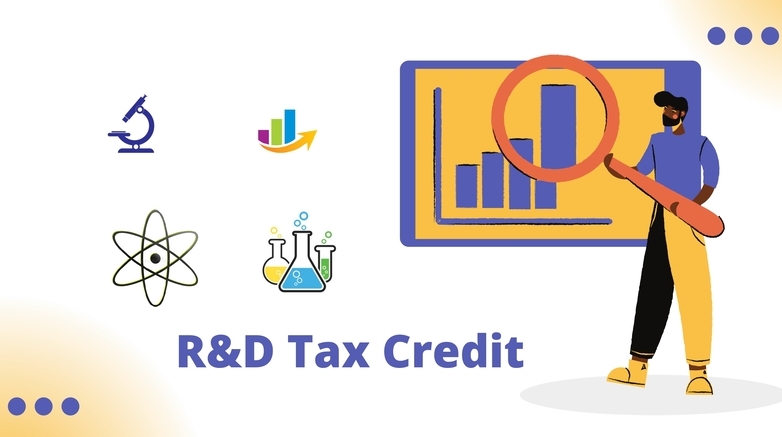Boosting Profitability with R&D Tax Credit: How Effective Financial Planning Powers Businesses

Businesses are continually looking for ways to improve their financial performance, where profitability and competitive advantage are key. One sometimes ignored means of accomplishing this is through research and development (R&D) tax credit. These specialized tax incentives, designed to promote innovation and research, hold immense potential for businesses to boost their profitability and gain a distinct edge in the market.
Effective financial planning is key to harnessing the full benefits of R&D tax credit. By thoroughly understanding the intricacies of these credit and skillfully integrating them into their financial strategies, businesses can not only reduce their tax liabilities but also unlock additional cash flow that can be reinvested to fuel growth and innovation.
Throughout this article, we will explore the symbiotic relationship between R&D tax credit and effective financial planning in empowering businesses to achieve higher profitability. We will delve into the nuances of R&D tax credit, discuss the pivotal role of financial planning in optimizing their benefits, and shed light on how these incentives can be leveraged to foster innovation and drive sustainable growth.
Understanding R&D Tax Credit
R&D tax credit are government-backed incentives aimed at stimulating innovation and research within businesses. These tax credits provide a financial benefit to companies engaged in qualifying R&D activities by reducing their tax liabilities and increasing their cash flow. The underlying goal of R&D tax credit is to encourage businesses to invest in research and development, which drives technological advancements, fosters economic growth, and promotes competitiveness.
To claim R&D tax credit, businesses must meet specific eligibility criteria set by tax authorities. These criteria typically revolve around the nature of the R&D activities and associated expenditures. Eligible R&D activities often involve the development of new products, processes, or software or the enhancement of existing ones through technological or scientific advancements. Qualifying expenditures may include salaries of R&D personnel, materials and supplies used in R&D, and costs associated with conducting trials and experiments.
Maximizing R&D Tax Credit Benefits Through Effective Financial Planning
Effective financial planning plays a crucial role in optimizing the benefits of R&D tax credit for businesses. By aligning R&D activities with business goals and carefully managing expenditures, businesses can maximize eligible claims and strategically allocate resources for innovation and growth.
Proactive financial planning ensures that finance professionals work closely with R&D teams to identify and document eligible activities and expenditures. By fostering collaboration and open communication, finance professionals can gain a comprehensive understanding of R&D projects, ensuring that all qualifying expenses are properly identified and recorded. This collaboration also helps in streamlining the claim process, reducing the chances of errors or omissions that could result in missed credits.
Financial planning also involves continuously monitoring and tracking R&D expenses to ensure compliance with tax regulations. Robust financial systems and processes should be in place to accurately record and report R&D expenditures. Regular reviews of financial data and documentation can identify areas for improvement and provide insights into optimizing R&D spending for future claim periods.
Furthermore, effective financial planning enables finance professionals to analyze the financial impact of claiming R&D tax credit. By quantifying the potential tax savings and increased cash flow resulting from the credits, businesses can make informed decisions on resource allocation. These financial insights can guide investment decisions, whether it’s reinvesting in further R&D, expanding operations, or exploring new markets and opportunities.
Leveraging R&D Tax Credit for Innovation and Growth
Claiming the R&D tax credit using R&D tax credit software not only provides immediate financial benefits but also serves as catalysts for innovation and long-term growth. By motivating financial firms to spend on R&D, these credits fuel technological advancements, product innovation, and process improvements.
Finance businesses can leverage R&D tax credit to drive innovation by allocating the financial resources saved through reduced tax liabilities toward research initiatives. This can involve investing in state-of-the-art technologies, hiring top talent, or funding collaborative projects with research institutions or industry partners. By embracing innovation, finance businesses can enhance their products and services, improve operational efficiency, and gain a competitive edge in the marketplace.
Moreover, R&D tax credit can have a profound impact on a business’s long-term growth trajectory. By investing in research and development, finance businesses can expand their product and service offerings, enter new markets, and diversify their revenue streams. The ability to innovate and offer unique solutions positions businesses as industry leaders and strengthens their market positioning, attracting new clients and fostering customer loyalty.
Collaboration between the Finance and R&D Departments
Effective collaboration between finance and R&D departments is critical for maximizing the benefits of R&D tax credit. Finance professionals should work closely with R&D teams to identify eligible activities, ensure accurate documentation, and streamline the claim process.
Finance professionals play a crucial role in providing guidance and support to R&D teams, helping them identify activities that meet the eligibility criteria. By having a deep understanding of tax regulations and industry-specific nuances, finance professionals can guide R&D teams in aligning their projects with the qualifying criteria.
Regular communication and coordination between the finance and R&D departments are essential throughout the R&D process. This includes documenting R&D activities, tracking expenditures, and providing accurate financial data for claim preparation. By maintaining a collaborative environment, finance and R&D departments can streamline the claim process, mitigate potential errors, and ensure compliance with tax regulations.
In Conclusion
Effective financial planning plays a crucial role in boosting profitability for finance businesses through the strategic utilization of R&D tax credit. By understanding the nuances of R&D tax credit and integrating them into financial strategies, businesses can reduce tax liabilities, increase cash flow, and foster innovation and growth.
Aligning R&D activities with business goals, collaborating between finance and R&D departments, and diligently tracking expenditures are key components of effective financial planning. By leveraging R&D tax credit, finance businesses can allocate resources toward research and development, enhance products and services, and position themselves as industry leaders.
However, navigating the complexities of R&D tax credit requires ongoing vigilance and staying updated with evolving tax regulations. Seeking expert guidance and leveraging specialized knowledge are essential for optimizing the benefits of R&D tax credit while ensuring compliance.
As finance businesses embrace effective financial planning and leverage R&D tax credit, they unlock the potential for increased profitability, long-term growth, and sustained success in the competitive finance industry.

Pranab Bhandari is an Editor of the Financial Blog “Financebuzz”. Apart from writing informative financial articles for his blog, he is a regular contributor to many national and international publications namely Tweak Your Biz, Growth Rocks ETC.





